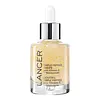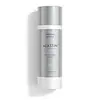What's inside
What's inside
 Key Ingredients
Key Ingredients

 Benefits
Benefits

 Concerns
Concerns

No concerns
 Ingredients Side-by-side
Ingredients Side-by-side

Water
Skin ConditioningGlycereth-7 Triacetate
EmollientPropanediol
SolventNiacinamide
SmoothingPentylene Glycol
Skin ConditioningBetaine
HumectantGlycerin
HumectantSodium Polyacryloyldimethyl Taurate
Emulsion StabilisingLactic Acid/Glycolic Acid Copolymer
Skin ConditioningCopper Palmitoyl Heptapeptide-14
Skin ConditioningHeptapeptide-15 Palmitate
Skin ConditioningHyaluronic Acid
HumectantPalmitoyl Tetrapeptide-72 Amide
Skin ConditioningFerulic Acid
AntimicrobialAcetyl Tetrapeptide-2
Skin ConditioningHydrolyzed Soy Protein
HumectantRice Amino Acids
Skin ConditioningProline
Skin ConditioningHydrolyzed Adansonia Digitata Seed Extract
Triheptanoin
Skin ConditioningCoco-Caprylate/Caprate
EmollientDilinoleic Acid/Butanediol Copolymer
Castor Oil/Ipdi Copolymer
Mannitol
HumectantMicrocrystalline Cellulose
AbsorbentHydroxypropyl Methylcellulose
Emulsion StabilisingEthylhexylglycerin
Skin ConditioningTocopheryl Acetate
AntioxidantAlgin
MaskingPolyvinyl Alcohol
Caprylyl Glycol
EmollientCaprylhydroxamic Acid
1,2-Hexanediol
Skin ConditioningDisodium EDTA
Sodium Benzoate
MaskingSodium Hydroxide
BufferingCitric Acid
BufferingCI 77492
Cosmetic ColorantWater, Glycereth-7 Triacetate, Propanediol, Niacinamide, Pentylene Glycol, Betaine, Glycerin, Sodium Polyacryloyldimethyl Taurate, Lactic Acid/Glycolic Acid Copolymer, Copper Palmitoyl Heptapeptide-14, Heptapeptide-15 Palmitate, Hyaluronic Acid, Palmitoyl Tetrapeptide-72 Amide, Ferulic Acid, Acetyl Tetrapeptide-2, Hydrolyzed Soy Protein, Rice Amino Acids, Proline, Hydrolyzed Adansonia Digitata Seed Extract, Triheptanoin, Coco-Caprylate/Caprate, Dilinoleic Acid/Butanediol Copolymer, Castor Oil/Ipdi Copolymer, Mannitol, Microcrystalline Cellulose, Hydroxypropyl Methylcellulose, Ethylhexylglycerin, Tocopheryl Acetate, Algin, Polyvinyl Alcohol, Caprylyl Glycol, Caprylhydroxamic Acid, 1,2-Hexanediol, Disodium EDTA, Sodium Benzoate, Sodium Hydroxide, Citric Acid, CI 77492
Water
Skin ConditioningGlycerin
HumectantPolyacrylate-13
Dimethicone
EmollientSodium Hyaluronate
HumectantSodium Hyaluronate Crosspolymer
HumectantOctapeptide-45
Skin ConditioningHexapeptide-11
Skin ConditioningTremella Fuciformis Sporocarp Extract
AntioxidantLactoferrin
Skin ConditioningTetradecyl Aminobutyroylvalylaminobutyric Urea Trifluoroacetate
Skin ConditioningXylitol
HumectantPropanediol
SolventAnhydroxylitol
HumectantPhospholipids
Skin ConditioningXylitylglucoside
HumectantHydroxymethoxyphenyl Decanone
Skin ConditioningTocopherol
AntioxidantAscorbyl Palmitate
AntioxidantCaprylyl Methicone
Skin ConditioningCaprylic/Capric Triglyceride
MaskingPolyisobutene
Caprylyl Glycol
EmollientDisodium EDTA
Betaine
HumectantPolysorbate 20
EmulsifyingEthylhexylglycerin
Skin ConditioningCaprylhydroxamic Acid
Sorbitan Isostearate
EmulsifyingHelianthus Annuus Seed Oil
EmollientLecithin
EmollientPentylene Glycol
Skin ConditioningMagnesium Chloride
Phenoxyethanol
PreservativePotassium Sorbate
PreservativeSodium Hydroxide
BufferingWater, Glycerin, Polyacrylate-13, Dimethicone, Sodium Hyaluronate, Sodium Hyaluronate Crosspolymer, Octapeptide-45, Hexapeptide-11, Tremella Fuciformis Sporocarp Extract, Lactoferrin, Tetradecyl Aminobutyroylvalylaminobutyric Urea Trifluoroacetate, Xylitol, Propanediol, Anhydroxylitol, Phospholipids, Xylitylglucoside, Hydroxymethoxyphenyl Decanone, Tocopherol, Ascorbyl Palmitate, Caprylyl Methicone, Caprylic/Capric Triglyceride, Polyisobutene, Caprylyl Glycol, Disodium EDTA, Betaine, Polysorbate 20, Ethylhexylglycerin, Caprylhydroxamic Acid, Sorbitan Isostearate, Helianthus Annuus Seed Oil, Lecithin, Pentylene Glycol, Magnesium Chloride, Phenoxyethanol, Potassium Sorbate, Sodium Hydroxide
Ingredients Explained
These ingredients are found in both products.
Ingredients higher up in an ingredient list are typically present in a larger amount.
Betaine is a common humectant (a substance that promotes retention of moisture). It's known to be gentle on the skin and can help balance hydration.
This ingredient is best for improving hydration and soothing irritated skin. Studies also show it helps even out skin tone.
Fun fact: Betaine is naturally created in the skin and body. The kind found within cosmetic products can be either plant-derived or synthetic.
Another name for betaine is trimethylglycine.
Learn more about BetaineCaprylhydroxamic Acid is a chelating agent.
Chelating agents help prevent metal ions from binding to other ingredients. This helps prevent unwanted reactions and effects from using the product.
Caprylhydroxamic Acid is often used with natural antimicrobial products as an alternative to preservatives.
Learn more about Caprylhydroxamic AcidCaprylyl Glycol is a humectant and emollient, meaning it attracts and preserves moisture.
It is a common ingredient in many products, especially those designed to hydrate skin. The primary benefits are retaining moisture, skin softening, and promoting a healthy skin barrier.
Though Caprylyl Glycol is an alcohol derived from fatty acids, it is not the kind that can dry out skin.
This ingredient is also used as a preservative to extend the life of products. It has slight antimicrobial properties.
Learn more about Caprylyl GlycolDisodium EDTA plays a role in making products more stable by aiding other preservatives.
It is a chelating agent, meaning it neutralizes metal ions that may be found in a product.
Disodium EDTA is a salt of edetic acid and is found to be safe in cosmetic ingredients.
Learn more about Disodium EDTAEthylhexylglycerin (we can't pronounce this either) is commonly used as a preservative and skin softener. It is derived from glyceryl.
You might see Ethylhexylglycerin often paired with other preservatives such as phenoxyethanol. Ethylhexylglycerin has been found to increase the effectiveness of these other preservatives.
Glycerin is already naturally found in your skin. It helps moisturize and protect your skin.
A study from 2016 found glycerin to be more effective as a humectant than AHAs and hyaluronic acid.
As a humectant, it helps the skin stay hydrated by pulling moisture to your skin. The low molecular weight of glycerin allows it to pull moisture into the deeper layers of your skin.
Hydrated skin improves your skin barrier; Your skin barrier helps protect against irritants and bacteria.
Glycerin has also been found to have antimicrobial and antiviral properties. Due to these properties, glycerin is often used in wound and burn treatments.
In cosmetics, glycerin is usually derived from plants such as soybean or palm. However, it can also be sourced from animals, such as tallow or animal fat.
This ingredient is organic, colorless, odorless, and non-toxic.
Glycerin is the name for this ingredient in American English. British English uses Glycerol/Glycerine.
Learn more about GlycerinPentylene glycol is typically used within a product to thicken it. It also adds a smooth, soft, and moisturizing feel to the product. It is naturally found in plants such as sugar beets.
The hydrophilic trait of Pentylene Glycol makes it a humectant. As a humectant, Pentylene Glycol helps draw moisture from the air to your skin. This can help keep your skin hydrated.
This property also makes Pentylene Glycol a great texture enhancer. It can also help thicken or stabilize a product.
Pentylene Glycol also acts as a mild preservative and helps to keep a product microbe-free.
Some people may experience mild eye and skin irritation from Pentylene Glycol. We always recommend speaking with a professional about using this ingredient in your routine.
Pentylene Glycol has a low molecular weight and is part of the 1,2-glycol family.
Learn more about Pentylene GlycolPropanediol is an all-star ingredient. It softens, hydrates, and smooths the skin.
It’s often used to:
Propanediol is not likely to cause sensitivity and considered safe to use. It is derived from corn or petroleum with a clear color and no scent.
Learn more about PropanediolSodium Hydroxide is also known as lye or caustic soda. It is used to adjust the pH of products; many ingredients require a specific pH to be effective.
In small amounts, sodium hydroxide is considered safe to use. However, large amounts may cause chemical burns due to its high alkaline.
Your skin has a natural pH and acid mantle. This acid mantle helps prevent harmful bacteria from breaking through. The acid mantle also helps keep your skin hydrated.
"Alkaline" refers to a high pH level. A low pH level would be considered acidic.
Learn more about Sodium HydroxideWater. It's the most common cosmetic ingredient of all. You'll usually see it at the top of ingredient lists, meaning that it makes up the largest part of the product.
So why is it so popular? Water most often acts as a solvent - this means that it helps dissolve other ingredients into the formulation.
You'll also recognize water as that liquid we all need to stay alive. If you see this, drink a glass of water. Stay hydrated!
Learn more about Water